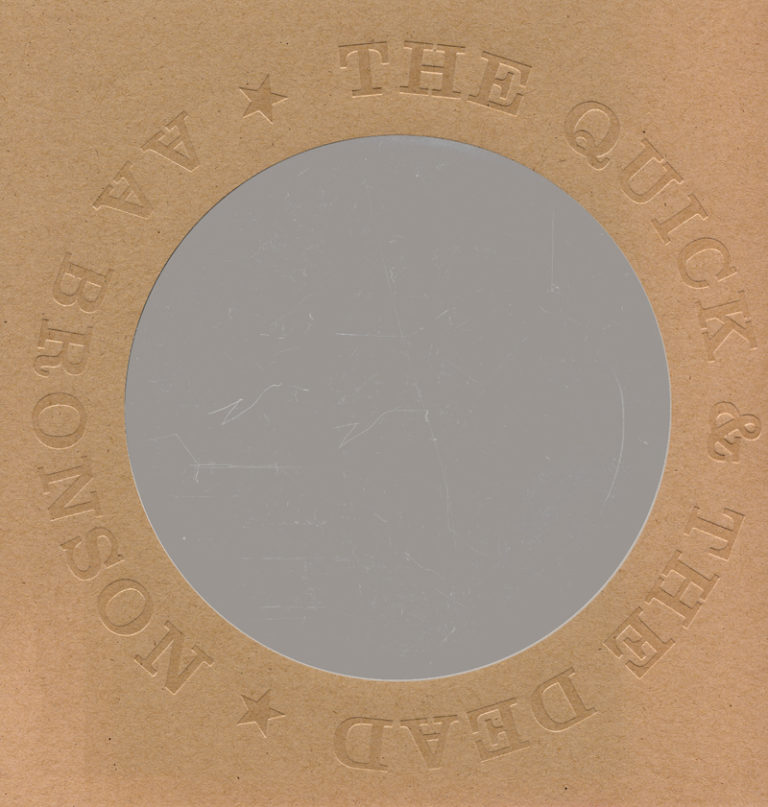25 June 2004 – 22 August 2004
Morris and Helen Belkin Art Gallery
AA Bronson: The Quick and the Dead
-
AA Bronson
Artist
The Quick and the Dead is Bronson’s first solo exhibition in Canada. Born in Vancouver in 1946, Bronson began his career as one member of General Idea, the artistic collective formed in Toronto in 1969 with Felix Partz and Jorge Zontal. Following the deaths of Partz and Zontal in 1994, Bronson concerned himself with creating new means of representing dying and loss.
The multi-media exhibition is centred around a 17th-century Tibetan convex Spirit Mirror once used by the State Oracle. Convex mirrors are a theme throughout the exhibition, from a series of 1969-70 photographs to recent sculptures. Bubble Machine #2 is a geodesic dome covered with motorcycle rear view mirrors. For Robert Morris incorporates surveillance mirrors. The mirrors in turn echo a kinetic sculpture producing a cascade of soap bubbles in the Gallery, an image of the transitory nature of life and the emptiness of the ego. In the exhibition aspects of self-portraiture and self-exposure compound and complicate the meditation on life, death and individuality.
Through personal processes of healing, Bronson began to assume the role of a healer himself. AA Bronson Healer is both the autobiographic outcome of dealing with death and aging and the ironic continuation of the commodity critique of General Idea.
The exhibition AA Bronson: The Quick and the Dead, co-organized with the Power Plant Contemporary Art Gallery at Harbourfront Centre, Toronto, is made possible by the support of the Canada Council for the Arts, The Ontario Arts Council, the City of Toronto through the Toronto Arts Council.

AA Bronson: The Quick and the Dead. Exhibition catalogue.
-
AA Bronson
Artist
Funders
-
Canada Council for the Arts
-
Ontario Arts Council
-
City of Toronto through the Toronto Arts Council
Related
-
Publication
2004
AA Bronson: The Quick and the Dead
 Exhibition catalogue from AA Bronson: The Quick and the Dead at the Belkin (25 June—22 August 2004) with texts by Wayne Baerwaldt, Scott Watson, AA Bronson, Bill Arnin, Robert Morris, Jop von Bennekom and Andrew Zealley. [more information and purchase]
Exhibition catalogue from AA Bronson: The Quick and the Dead at the Belkin (25 June—22 August 2004) with texts by Wayne Baerwaldt, Scott Watson, AA Bronson, Bill Arnin, Robert Morris, Jop von Bennekom and Andrew Zealley. [more information and purchase] -
Publication
2019
Image Bank
 Image Bank explores the artistic collaboration of Michael Morris, Vincent Trasov and originally Gary Lee-Nova, including their most spectacular works – extended performances with props, such as Colour Bar Research (1970-78) and Mr. Peanut’s mayoralty campaign (1974) in which Vincent Trasov as Mr. Peanut ran for mayor of Vancouver – alongside their extensive mail-art exchanges with other networkers such as Robert Filliou, General Idea, Ant Farm and Ray Johnson’s New York Correspondence School. [more information and purchase]
Image Bank explores the artistic collaboration of Michael Morris, Vincent Trasov and originally Gary Lee-Nova, including their most spectacular works – extended performances with props, such as Colour Bar Research (1970-78) and Mr. Peanut’s mayoralty campaign (1974) in which Vincent Trasov as Mr. Peanut ran for mayor of Vancouver – alongside their extensive mail-art exchanges with other networkers such as Robert Filliou, General Idea, Ant Farm and Ray Johnson’s New York Correspondence School. [more information and purchase]